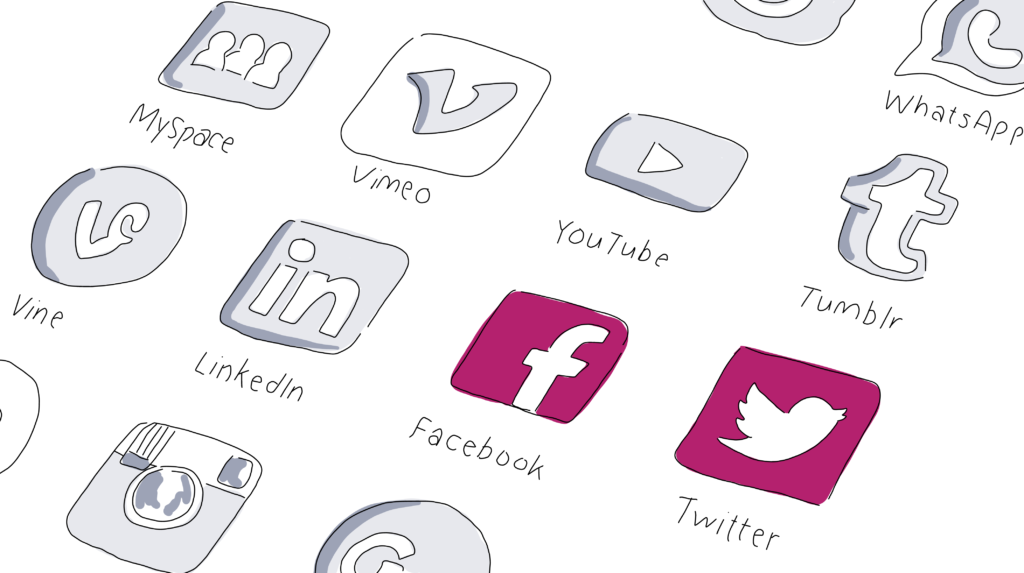
10 Must-Have Virtual Event Technology Tools
Event technology is at the heart of the virtual events trend. From online tradeshows to webinars to live-streamed conferences and performances ” technology makes it all possible. But what are the essential tech tools you need to plan a virtual event, drive registrations and engagement, and run the event seamlessly? Here we look at the top 10 virtual event technology tools you need to put together events that excite, entertain, and educate.
Explore 10 of our favorite virtual event technology tools:
1. Virtual event website
Like in-person events, virtual events benefit from a dedicated event website. These websites provide a “home base” for your virtual events, which creates a sense of realness to events in the digital sphere. Every digital event draws guests who keep close tabs on social media, others who watch their email inbox, and still others who don’t check these channels. An event website keeps everyone on the same page.
Here are the essential elements of a virtual event website:
- When and where. What’s the date and start time of the event? Where are people meeting online? (i.e., What’s the central online platform for the event?)
- What’s happening and why should people attend. Clearly describe what people will get from the virtual event if they register. Knowledge? Networking opportunities? Entertainment? This is your event pitch that drives home registrations.
- Clear branding. It should be instantly apparent who is at the helm of an event. In some instances (think The Sundance Festival or CES), the event itself is the primary brand. But for many events, the main branding will be the company or organization hosting the virtual program.
- Event title. Give your event a simple title that clarifies the event topic or goal. Choose the coinciding hashtag for the event at the same time.
- Call to action and registration. Make it easy for prospective guests to become registered attendees. Your CTA should stand out and encourage clicks.
- Appealing images that reflect the event. Include photos that reflect the goal of the event. Happy interactions in real-time over screens? Learning and studying? Use images that show what people can expect.
- Responses to previous events. If this is a repeating virtual event, add quotes from happy attendees. You’ll ask for these responses in post-event surveys, but you will also find them on social media.
2. Event registration technology
Event registration is the bridge between event marketing and your virtual event ” it must be seamless, secure, intuitive, and mobile-friendly. You can use a flexible event website design and registration platform that combines design and the registration process. Or, you can add a registration link to an existing website. Whichever route you choose, the registration and payment processes should be straightforward and secure. Typically, registration will include a minimum of five pages:
- Attendee information
- Registration items (level of access, VIP tickets)
- Session sign-up
- Summary of what attendees have input and chosen
- Payment page
You may also include questions for registrants, such as how they learned about the event or what they like about specific breakout session offerings. The answers can help you improve your future virtual event planning and marketing strategies.
3. Event apps
Most people access event information through their mobile devices, at least in part. Creating a mobile event app to coincide with your website can help make your event more experiential and interactive. Like your website, your event app should reflect the branding of the event and include a clear rundown of its benefits. Because you’re busy planning the virtual event offerings, from securing sponsors to finalizing keynote speaker contracts, it should also be easy to build.
For virtual events, apps are most valuable as attendee engagement tools. Apps can foster:
- Professional networking
- Knowledge-building through original event subject matter content
- Sustained interest through gamification and live Q&As
- Understanding through attendee surveys before, during, and after the event
An event app can also boost event revenue through featured sponsors and ads for sponsors within the app.
4. Live-streaming software
Most online events are live-streamed entirely or in part. For that, you’ll need to have attendees gather on a live-streaming app to view the keynote speeches, training seminars, product rollouts, and performances you have planned. There are many technology options for live-streaming events, including:
- YouTube Live
- Facebook Live
- Periscope
- Livestream
- Brightcove
- Twitch
5. Digital video equipment
Whether your virtual event is fully live-streamed, or a mix of live and recorded video, you’ll need digital video equipment to capture the focus of the event. This could be capturing a panel discussion in a studio, a remote performance on a stage, or a keynote talk in the speaker’s living room. Whether you’re hiring event videographers or going as low-tech as possible, here are the tools you’ll need to capture the moments:
- Digital video camera (a professional digital camera or a smartphone)
- Tripods
- Lighting equipment
6. Webinar platforms
Some video streaming platforms are better-suited to interactive virtual events, such as business meetings, training sessions, and small networking events. Rather than viewing a stream, these platforms allow virtual event attendees to interact with each other. Top software options for this type of interactive online event:
- Zoom
- GoToWebinar
- Livestorm
- ClickMeeting
These platforms enable the host to share screens dynamically and hold back-and-forth conversations with attendees.
Furthermore GoToWebinar, Webex, and Zoom, among others, integrate with Cvent tools that make the creation, management, and execution of virtual training webinars quick and easy. With these tools you can ensure your participants register for your event, pick the right sessions, receive the right communication around agendas, time, credits, and more.
This technology also allows you to track all your virtual training engagement and give you a complete view into your attendees’ event activity history. Plus, you can report all that back to other key systems, which is particularly helpful if your company requires hours of training for accreditation or certification.
7. Reliable WiFi
Every source point for video and live streaming must have powerful WiFi to ensure it reaches your audience. Check and triple-check that the WiFi is strong at the event command center, whether that is a studio or a corporate office. And if the keynote speaker is streaming their talk from home ” their WiFi must be strong too.
8. Event planning software
Though the moving pieces are slightly different, virtual event planning is just as complicated as planning in-person events. You need event planning software to make sure you hit every to-do before, during, and after the event. You don’t need F&B for a crowd, but you may need small-scale catering for the virtual event team if they’re all at the venue together (speakers, cameraperson(s), audio). You’ll also need people to set up backdrops for speakers and tools for seminar leaders, whether that’s a whiteboard or a digital screen.
As mentioned above, you have to spend extra time setting up and testing the event technology to ensure it works perfectly. Use your event planning software to schedule those test-runs with speakers (if they are recording from home) or vendors (if recording in a studio or on a stage). Other ways to use your planning software to organize your virtual event:
- Track the RFPs you send to vendors
- Track RFP responses in one place
- Manage vendor and venue contracts
- Diagram an event layout for a virtual roundtable
Finally, throughout the event planning process, you need to communicate ” with your team, key decision-makers, speakers, vendors, and sponsors. Event planning software helps you prioritize tasks across your team, whether it’s sending emails to vendors or calling speakers having difficulty with the technology.

9. Virtual reality technology
In the last few years, experiential events and marketing have skyrocketed in popularity. Virtual reality is an excellent way to bring a shared experience to online events. Through VR, you can take attendees on team-building museum tours, allow them to explore a virtual trade show, or give them a comprehensive product demo.
To film in VR requires a virtual reality camera and tripod, plus a computer and VR editing tools to create the final presentation. You’ll also have to make sure every event participant has a VR headset they can use. A great route is to send all registrants an affordable VR headset, such as Google Cardboard that they can use with their smartphone.
10. Event marketing software
Your virtual event needs a promotion strategy so that people register and show up at the allotted time. Event marketing software helps you design your promotion strategy and schedule your marketing emails, paid event advertising, and social media posts. Beyond scheduling emails, posts, and ads, event marketing software helps you:
- Send reminders to invitees who haven’t registered
- Send reminders to busy registered attendees who may miss the date
- Track open rates for emails
- Run A/B tests for social posts, ads, and event emails
- Track social engagement
Onboard the best virtual event technology tools today!
Virtual events are 100-percent dependent upon technology ” make sure your tech is up to the job.
Next, discover 6 ways virtual attendance is changing the face of events.

